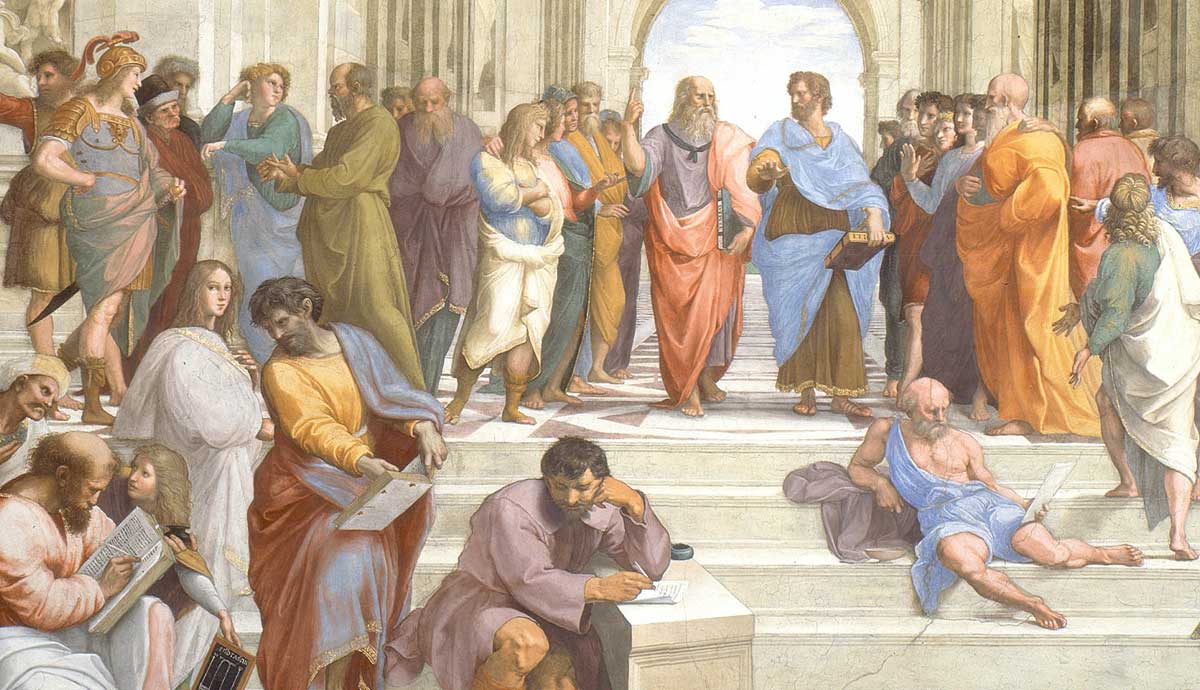
Have you ever wondered how we deduce and comprehend our surroundings? How do we rationalize works of art, literature, or even casual conversations? Hermeneutics is a discipline that tackles these inquiries. Based on the Greek verb hermēneuō (to interpret), hermeneutics investigates interpretation’s theory and practice. From ancient thinkers such as Plato and Aristotle to contemporary intellectuals like Martin Heidegger and Hans-Georg Gadamer, this notion has undergone changes through time.
So, how does understanding hermeneutics help us better understand the world around us and our place in it?
Definition of Hermeneutics

Hermeneutics—or the art of interpretation—is both a set of practices and an academic discipline. It focuses on grasping meaning in texts, symbols, actions, and experiences.
The term hermeneutics comes from Hermes, the Greek god who was believed to be able to translate divine will for humans.
In other words, hermeneutics covers everything that involves interpreting something else. This could include literature, law, linguistics, or any number of other areas.
One way to think about this might be to define what happens when interpreting novels. To work out what an author meant by their words, we need to look at things like symbolism and characterization. All this belongs within the broad field of hermeneutics.
Another example: In theology, sacred texts (such as the Qur’an or Bible) need careful study before their moral lessons can be understood. This kind of thinking falls under the heading “hermeneutical methods.”
But hermeneutics isn’t limited to religious studies; it also applies more widely in life, such as interpreting someone’s tone of voice during conversation.
Historical Roots of Hermeneutics

The origin of hermeneutics stretches back to ancient times. In ancient Greece, Plato tackled interpretation in his dialogues, discussing the importance of revealing the truth behind words and ideas.
However, it was with Aristotle that hermeneutics began to become more systematic. His focus on rhetoric—how to communicate persuasively—overlapped with interpretation.
He explored what distinguished effective meaning from ineffective and how listeners could accurately decode messages conveyed through language.
In Europe, Christianity played a key role in shaping hermeneutics. Biblical texts presented Christian theologians with hurdles in interpreting them across different linguistic, cultural, and historical divides.
Early Christian thinkers, such as Saint Augustine, developed methods for interpreting religious texts that considered cultural and historical context.
Friedrich Schleiermacher contributed significantly to hermeneutics in the 19th century by introducing an approach called “hermeneutics of understanding.”
This emphasized empathetic engagement with texts: understanding involved grasping linguistic meanings and entering into dialogue with authors.
One influential figure in modern hermeneutics is Martin Heidegger. His concept of the “hermeneutic circle” argued that proper understanding requires circular movement between parts and the whole.
It challenged traditional notions by suggesting that our preconceptions shape our interpretations—putting subjectivity back into the heart of thinking about how we understand things properly.
Hans-Georg Gadamer expanded on Heidegger’s ideas when developing a comprehensive hermeneutical framework: Truth and Method (1960).
The book argued that interpretation was not confined only to texts but comprised all human experience. It stressed the fusion of horizons whereby interpreters bring their own historical-cultural background into contact with the text or object being interpreted.
Core Principles of Hermeneutics

The principles that underlie hermeneutics—the theory and practice of interpretation—shape our understanding of how meaning is derived from texts, symbols, actions, and experiences.
First among these is the principle of context. This underscores the importance of considering the broader cultural, historical, and social milieu in which a text or object is situated.
The idea is to grasp its intended meaning by exploring what was happening at that time. For example, if we interpret historical documents or art pieces, knowledge about their epochs can tell us more about them.
Second comes language: this principle recognizes that language isn’t purely objective but shaped by interpretation.
Hermeneutics acknowledges that words carry multiple layers of meaning based on cultural associations (for instance, religion) and personal ones. To understand this complexity is to uncover various nuances present within a text or conversation.
Then there’s subjectivity: interpretations aren’t neutral but influenced by an individual’s perspectives, biases, and experiences—something known as a “horizon” or frame of reference. Understanding one’s subjectivity allows for reflection and critical engagement with different viewpoints.
Another core principle? That interpretation involves an ongoing dialogue between parts and whole, known as a “hermeneutic circle.”
It means understanding individual elements requires considering them in relation to the overall structure or system; moving back and forth between specific details and broader frameworks expands our interpretive prowess.
The last highlights the fusion of horizons, introduced by philosopher Hans-Georg Gadamer, where the interpreter understands (and merges with) what’s interpreted.
So-called fusion occurs when you merge different horizons together; recognition horizon entails bridging gaps between different time periods, cultures, and experiences to arrive at a comprehensive understanding.
Types of Hermeneutics

Hermeneutics, the art of interpretation, has developed different types and approaches over time. These types represent how hermeneutics is put into practice and interpreted across disciplines. Here are some key types:
- Biblical Hermeneutics: This type focuses on interpreting sacred texts, such as the Bible. It involves understanding historical context, cultural detail, literary devices, and theological issues to determine what scripture means.
- Literary Hermeneutics: The aim here is to interpret literature—novels, poems, or plays—by exploring literary devices, narrative patterns, and structure-symbolism or authorial intent to uncover deeper meaning.
- Philosophical Hermeneutics: This type considers the nature of interpretation itself from a philosophical perspective. For example, phenomenologists Martin Heidegger and Hans-Georg Gadamer said it was possible to understand human existence through a series of interpretations.
- Legal Hermeneutics: Used by legal scholars when interpreting laws or legal texts; this could involve considering legal traditions very carefully (or legislative intent) so that an accurate interpretation can be derived for application in court cases.
- Psychological (or Existential) Hermeneutics: When hermeneutical principles are applied to psychological experiences (such as psychoanalysis) or existential concerns, personal narratives might be interpreted using these techniques within therapy settings.
- Social Hermeneutics: Social scientists use hermeneutic methods to analyze social phenomena using various lenses, such as gender studies and race theories.
These various types highlight the diversity of applications and approaches within hermeneutics. Each type interprets texts, symbols, actions, and experiences within their respective fields using specific methodologies while concentrating on particular domains.
Hermeneutics Beyond Text: Philosophical Interpretation

Hermeneutics, traditionally associated with interpreting writing, isn’t confined to interpreting words. Philosophical hermeneutics explores how to interpret philosophical texts and ideas: it is about understanding what they mean and why they matter.
One example involves phenomenological interpretations of existentialist philosophers such as Jean-Paul Sartre and Martin Heidegger. Phenomenology tries to understand human existence by focusing on subjective experience.
To interpret these existentialists properly, one must make sense of their writings’ references to concepts such as freedom, authenticity, or individuality—something philosophical hermeneutics specializes in.
A second example involves taking an interpretive approach to metaphysical theories. Metaphysics is concerned with fundamental questions about reality and existence.
So, a hermeneutic interpretation of a metaphysical theory would involve critically analyzing the work of thinkers such as Aristotle, Immanuel Kant, or Friedrich Nietzsche for any references made within them to fundamental concepts such as being, causality, or consciousness.
There are other examples, too. Hermeneutics matters when we try to interpret ethics—when we want to help make sense of not only moral theories but also debates about whether there’s any objective reason for thinking one kind of behavior is morally better than another.
Then there’s aesthetics, where the challenge might be understanding or appreciating the meaning behind particular works’ artistic expression.
In addition, philosophical hermeneutics permits interpretations of involved philosophical systems such as Hegelian dialectics or linguistic analysis in Wittgenstein’s philosophy.
These interpretations demand the incorporation of historical context and textual analysis to grasp the intentions behind these intricate formulations.
To sum up, philosophical hermeneutics transcends the textual domain towards interpreting different philosophical perspectives and ideas.
It involves understanding and unraveling the meaning, implications, and relevance of existentialism, metaphysics, ethics, aesthetics, and other concepts within philosophy.
Challenges and Criticisms of Hermeneutics

As a theory and practice of interpretation, hermeneutics has its share of challenges and criticisms. Although it provides valuable insights into how texts, symbols, actions, and experiences can be understood, some scholars have concerns about its limitations.
One challenge is that interpretation can be subjective. Critics say hermeneutics relies heavily on the subjectivity and preconceptions of interpreters—which may mean interpretations are biased or arbitrary.
Because the same text or object can be understood in multiple ways depending on different interpretive frameworks, there will always be some degree of ambiguity or disagreement.
A further criticism notes that hermeneutics risks cultural relativism. Because hermeneutics stresses how important historical and cultural context is for understanding things properly, this raises questions about whether meaning can ever objectively cross cultures—whether there can ever be a universal understanding of what something means.
Critics say using hermeneutical approaches could amount to an overly relativistic position, in which meaning becomes entirely contingent upon cultural differences or individual perspectives.
In addition, hermeneutics is often criticized for lacking clear methodological guidelines. Unlike more formalized disciplines such as science or mathematics, hermeneutics can rely on personal judgment and intuition rather than explicit rules or procedures.
This lack of a systematic methodological framework has led some to question the reliability and validity of hermeneutical interpretations.
Critics also argue that hidden biases or power dynamics may influence certain forms of interpretation. For instance, feminist scholars have argued that traditional hermeneutics may overlook gendered aspects in texts and inadvertently perpetuate patriarchal perspectives.
So, What Is Hermeneutics?

The ability to interpret what a text or an event means is called hermeneutics. Its job is understanding how meaning can be derived from texts, symbols, actions, and life events.
To fully understand something and make it personally meaningful, you need to analyze its context in literature, history, and language—which is why this discipline covers religion, law, social sciences, philosophy, and literature.
Knowledge of hermeneutic principles allows interpretation of things as diverse as religious texts or poetry. Whether we’re making sense of our own experiences or communicating with others, language use and nonverbal cues are key.
Even though it has many applications across many fields, it also carries some criticisms around relativism or subjectivity.
Overall, though, this area provides critical tools for analyzing meaning-making processes right across society, reminding us that interpreting is basic human stuff, part of engaging meaningfully with our surroundings.










